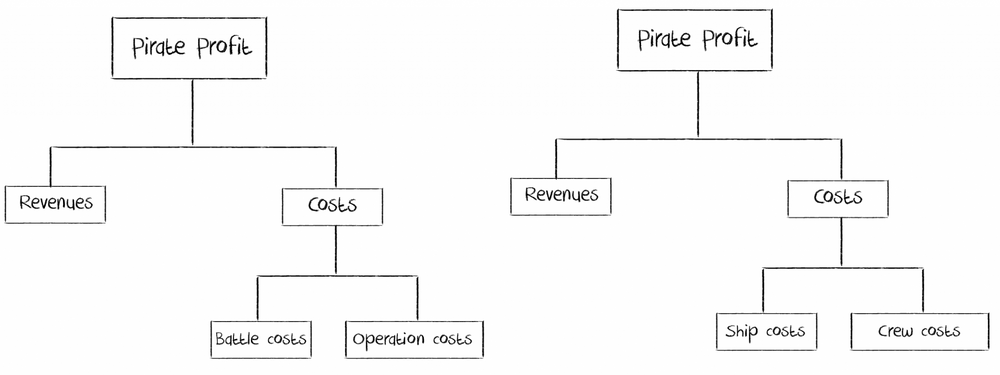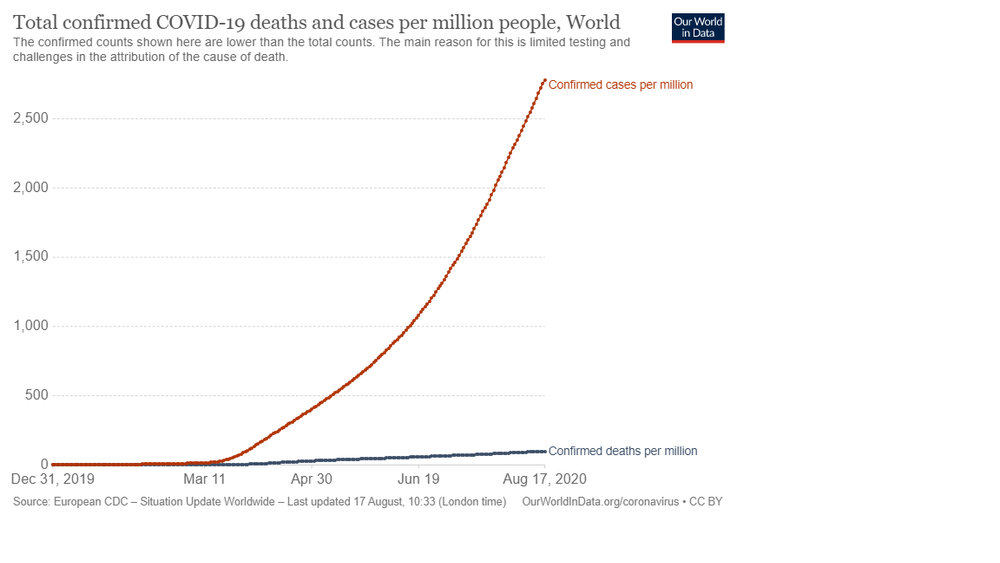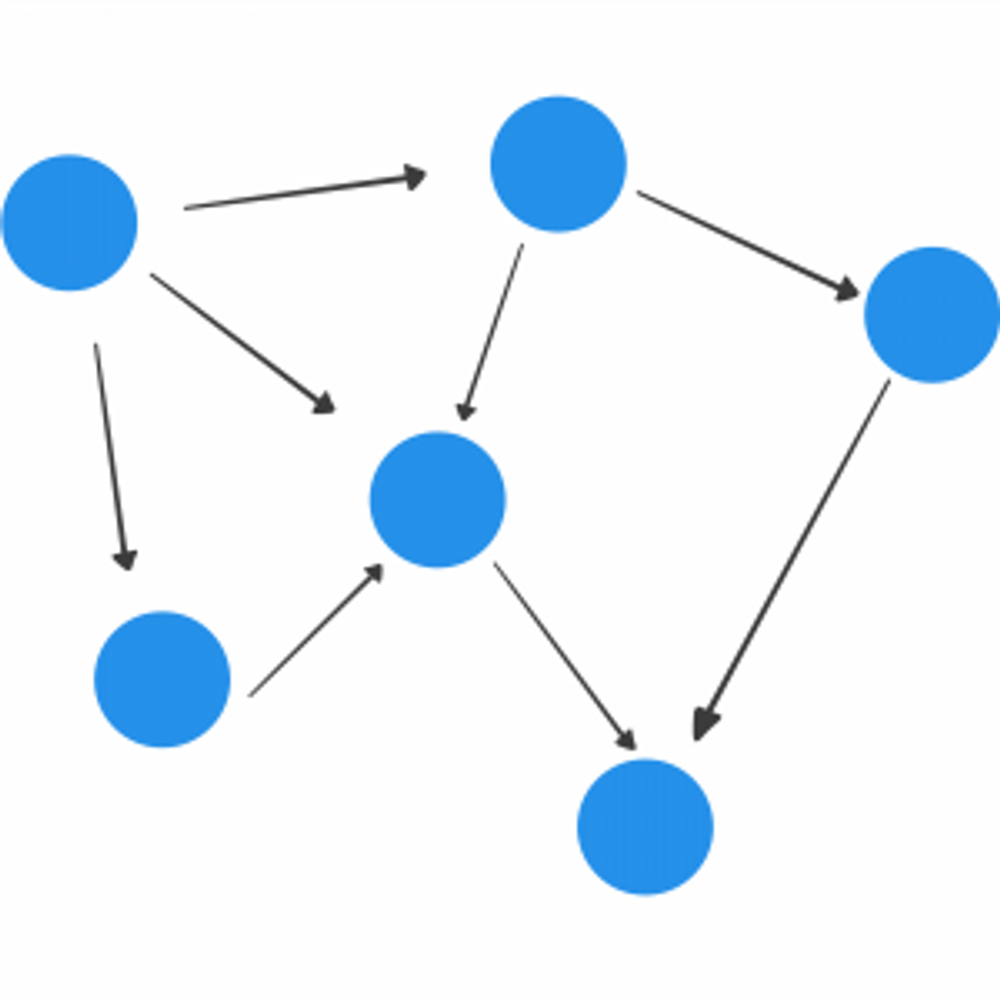Case interviews at McKinsey & Company are among the most challenging job interviews; they not only ask for your personal experience, but also put you in a strenuous simulation of consulting problem-solving, designed to lay bare your management consulting traits (or, the lack thereof).
Fortunately, although challenging, these interviews are also predictable. Follow me through this article – I’ll show you how to nail each of them, and land an offer at McKinsey – the world’s most prestigious management consulting firm.
Table of Contents
McKinsey interview process & requirements
McKinsey recruitment process
There are three phases in the McKinsey recruitment process – resume screening, PST test, and case interview. The whole process usually takes 2-3 months to complete, for a job starting about 6-12 months after application. New offices with higher HR demands and staffing shortages can be less clear-cut, but generally faster.
I’ve written other artcles to cover the first two phases, so I won’t go through them here. Rest assured – with practice, you’ll utterly conquer them. So that leaves us with the last, most exciting part of the game: case interviews.
If you haven’t grasped the basics of case interview, I advice you to go and read this Case Interview 101 crashcourse – a “guidebook” written for both beginners and experienced case interviewees. Link is on the right.
Now, let us continue with McKinsey case interviews.
McKinsey interview process
Each McKinsey candidate will have to undergo 4-6 interviews during 4-8 weeks. The first 2-3 interviews are often conducted by Engagement Managers; later interviews are conducted by the more senior Partners or Directors. McKinsey interviews usually consist of two parts: The PEI/Personal Experience Interview (10 minutes) and the case interview (30-45 minutes).
Consistently high performance is a must.
Your performance in each interview will be graded on three levels: Strongly Hire, Hire, Fail (they could have cooler names, IMO). One “Fail” means you’re out of the game, and there’s no “Try Again” button for the next two years; you must be consistently “Hire” or more in all interviews.
Luckily, McKinsey case interviews are quite predictable, so if you use my systematic approach and practice diligently, I’m sure you’ll do well.

What does McKinsey look for?
As with other MBB firms, McKinsey looks for the three core skills and qualifications in potential employees: problem-solving skills, leadership ability and achieving mentality. Prior business background is highly advantageous although not a requirement, and technical/industry knowledge is required for certain career tracks – such as McKinsey Digital, or jobs at support centers.
Since the terms are quite ambiguous, I’ll explain them here:
- Problem-solving skills: I’m talking about the analytical aspect of problem-solving – the whole consulting industry exists on the basis that consultants can break down business problems better than anyone else.
- Leadership ability: Getting a bunch of experienced people to do something they don’t want to is never easy; additionally, consultants usually work in teams. Keep in mind, “leadership” is about influencing people, not about getting nominated as the class monitor.
- Achieving mentality: The problems are always big and difficult, while deadlines are tight; don’t even think about work-life balance here, you have to go all-out. People unwilling to work that hard are never kicked out of the industry, because they never get in!
- Business intuition: Business background isn’t a requirement for prospective consultants; however, business knowledge is essential to excellent performance in case interviews. Luckily, it’s something you can learn, and most concepts used in consulting interviews are on basic to intermediate levels.
- Technical skills: Technical skills are indeed required for specialist positions, such as at McKinsey Digital. Precisely what kind of expertise or technical knowledge is tested will be informed to you by McKinsey, so don’t worry too much.
In McKinsey case interviews, each candidate must successfully display the following five attributes – among which the first three are crucial to consulting. In the Case Interview End-to-End Secrets Program, I’ll teach you how to demonstrate all of these attributes effectively, both in the case interview and the PEI.
McKinsey case interview format
What is a case interview?
A case interview is an interview with a business context.
In a case interview, you are given a business problem and asked to solve it – that problem, together with the whole surrounding business context, is called a case.
“The Pirate Company, based in the Caribbeans, offering assets removal services to ships in the area, is suffering from negative profits. They want you to look into the cause and solve it.”
In this case, the problem is decreasing profits. If you are the candidate, you’re supposed to find out what’s causing it, and most of the time, also how to fix it.
What are McKinsey case interviews like?
McKinsey case interviews are often interviewer-led. At the most extreme of this format, the interviewer “leads” the problem-solving process by asking separate questions related to the case context. The candidate cannot decide how to approach the problem. In actual cases, however, the candidate may be given some autonomy depending on the interviewer.
There are two extremes in terms of the autonomy you’d have in a case interview. On one end of the spectrum, in a candidate-led case, you lead the problem-solving process. On the other end, in an interviewer-led case, the interviewer tells you what to do.

If the Pirate case above were candidate-led, you’d actively break down the big profit problem and look for the root cause.
This time, however, it’s an interviewer-led case, so you’ll instead answer a series of questions coming from the interviewer.
- Interviewer-led cases consist of multiple mini-cases
In an interviewer-led case interview, the case is split into multiple small questions. Treat these questions as mini-cases, and take a structured approach to these questions, just like with a larger case. Avoid bottom-up answers as much as possible – “top-down” is still the name of the game.
Engagement Managers often decide on somewhat-structured question lists in advance, while Partners – being more senior – are more likely to make up questions on the fly.
- What factors would you consider in assessing The Pirate Company’s decreasing profits?
- The Company’s ship and crew costs have been rising due to competition with the British Royal Navy. What solutions do you suggest?
- How much additional revenue is necessary for The Pirate Company to break-even, in the face of the rising costs?
- Interviewer-led cases are more rigid
Expect to feel disconnected navigating through a predetermined set of questions.
Even if you come up with a fully-working approach, be prepared to be “dragged” back to the line if it differs from what the interviewer has in mind.
In answering the first question, you divided the costs into daily operations costs and battle costs, reasoning that battles don’t occur everyday, and their costs vary a lot.
While this may be a valid segmentation of pirate costs, the interviewer will likely redirect you to the predetermined course and have you work on ship and crew costs.
- Interviewer-led cases place more emphasis on being right

You must nail every question if you want to pass interviewer-led cases.
This difference is because in interviewer-led cases, the problem has been broken down for you through the predetermined set of questions (so you have more brainpower to focus on getting the “correct” answers). This stands in contrast to candidate-led cases where you break down the problem by yourself.
Nonetheless, never jump straight to the answer in interviewer-led cases – they still look for an “analytical mindset”, so the right result without a structured, logical approach will amount to nothing.Interested in learning about the candidate-led side of the spectrum? Wanting to know about the mechanisms of case interviews at BCG and Bain? See this extensive guide on candidate-led case interviews at BCG and Bain!
McKinsey case interview questions
McKinsey case interviews can be methodically prepared for by arranging the possible questions into the following 8 predictable categories.
- Framework/issue tree questions
- Market-sizing and guesstimate questions
- Brain teasers
- Chart insight questions
- Value proposition questions
- Information questions
- Math problems
- Solution-finding questions
I have written a detailed guide on these question types – you may want to check out that article for more insights. For each type of question, there is one example – suggestions and answers are at the end of this section, but try to answer them on your own first!
These questions apply not only to McKinsey cases, but also other interviewer-led case interviews!
Type 1 – Framework / issue tree
The issue tree is at the heart of consulting problem-solving, you cannot avoid it.
These questions are often worded as follows: “What factors would you consider in tackling this problem”, or “What are the possible factors leading to this problem?”. Don’t be tricked by listing out the factors immediately – they are in fact expecting an issue tree.
And to draw a spot-on issue tree, you need to master consulting problem-solving fundamentals, the MECE principle, and common consulting frameworks. Solid business intuition is also highly beneficial for these questions.
Gastronomia – a gourmet restaurant chain has found the turnover rate among its highly-skilled chefs increasing dramatically for the last 3 years; this has led to a noticeable decline in food quality and increased training costs, among other negative effects.
Which factors would you consider when tackling this turnover problem?
Type 2 – Market-sizing & guesstimate
These are on top of the list among popular interviewer-led case questions!
Market-sizing and guesstimate questions ask you to estimate vague (sometimes even silly) numbers such as the number of pickup trucks in the US, or how many ping pong balls you can fit into a Boeing 747.
What’s being tested here is whether you approach the question in a structured manner; the ideal way to tackle these questions is to divide the figure into small pieces, estimate each piece, then combine for a final result.
The interviewer doesn’t usually have a number in mind, so the margin of error can be quite large.
This question type is so common, we devote a whole article to it. Check out our comprehensive guide on Market-Sizing & Guesstimate Questions for more details!
E.g.: How many smartphones are sold each year, globally?
Type 3 – Brain teasers
Most people think solving brain teasers relies on “innate intelligence”, but in fact, even these questions can be trained!
Some brain teasers ask you to explain impossible situations or perform impossible tasks – the key here is to doubt your initial assumptions and challenge common sense.
Others focus on your ability to notice subtle details, so beware that your first impression is almost always inadequate – keep diving and switching angles for unobvious patterns, or pay close attention to every word.
Still others test your logical thinking with complex riddles; for these questions, visualizing the given information on scratch paper significantly eases up the process.
Read our article about Case Interview Brain Teasers for more insights on all of these exciting brain teasers!
Type 4 – Chart insights
Charts are powerful data visualization tools. Consultants love them, so if you’re a prospective consultant, mastering charts is a must – that’s why in my Case Interview End-to-End Secrets ProgramCase Interview End-to-End Secrets Program, the Math package includes an extensive section dedicated to chart exercises!
You can find a more detailed guide in the Charts section in our article about Consulting Math. I’ll keep it short here: the key to nailing chart questions is to examine all the labels before diving in, and when looking for insights, consider (1) the chart’s purpose, (2) your objectives, and (3) trends and abnormalities in the data.
Type 5 – Value proposition

No business can succeed without understanding what their customers want, so no candidate gets a consulting offer without fully mastering these questions!
“What will our customers like?” Business intuition is required to deliver a good answer. Again, as with the Solution-Finding questions, you should structure your analysis and presentation (for instance, “High Priority”, “Medium Priority”, and “Low Priority”).
E.g.: What will a customer consider when buying a Toyota sedan?
Type 6 – Information questions
In any problem-solving process, information is one of the overarching concerns!
You do need some business and consulting knowledge to answer these questions to know where to fetch a given piece of data from, and how to do it (e.g.: survey, financial reports, client interview, etc.).
Is there any other tip to improve your performance? Well, do your interviewer a favor, say in advance how you can acquire necessary data, and say it in a structured manner.
E.g.: How do you assess your target customer’s preferences for sports cars?
Type 7 – Math problems
A lot of information in case interviews and consulting work comes in the quantitative form, so you won’t escape Math by joining the consulting industry!
When you have to do math, perform back-of-the-envelope calculations in a structured fashion, and say out loud what you’re writing. For one thing, it’s safe; for another, you show that you’re careful, organized, and reliable – just like actual consultants.
We have a dedicated article on Consulting Math, which you should definitely read.
Type 8 – Solution-finding
What’s the point of analyzing a problem, if not to solve it?!
These questions rely mostly on your business intuition, however, some tips can still be applied: (1) segment the solutions based on their characteristics, and (2) give at least two solutions, preferably three to five.
E.g.: A restaurant that relies solely on on-premise dining found the loss of adjacent parking space (due to termination of contract) harming their revenue. How can they fix that?
Are 8 question types enough?
Well yes, but actually no.If you study those eight question types, rest assured that you’ve covered the majority of questions in interviewer-led cases.
However, I haven’t touched the most advanced questions – combinations or variants of the basic types, or even completely unpredictable ones.
How do you tackle these harder questions?
- Master the Basics: If you’re still a beginner, don’t bother about the advanced exercises. Focus your efforts on the basics, once you’ve mastered them it’d be comfortable to move on to higher, more sophisticated levels.
- Business Intuition: You need business intuition for a business-related job, it’s simple as that. Nearly every case concerns business in one way or another – even public sector cases. This is why we also teach business intuition in our Case Interview E2E Secret Program.
McKinsey case interview tips
In an interviewer-led case, there is (1) less of a natural flow, (2) more emphasis on correctness, and (3) less time to develop an answer. How do you adapt to these challenges?
These are the seven tips I used to crack case interviews at McKinsey. In the Case Interview End-to-End Secrets Program, you can find countless such tips throughout the 10 case videos of the Tips and Techniques package.
Tip #1: Actively try to take control of the case
In the beginning, try to control the case as if it’s candidate-led.
Playback the case, clarify and break down the problem immediately at the start – most likely, the interviewer will stop you if he/she intends on the interviewer-led route. However, by that time, you’ve already scored some points.
I can give you three benefits for acting as such:
- The interviewer will acknowledge your leading and proactive personality – these characteristics are very important for a consultant-to-be.
- If the interviewer slips towards the candidate-led sides (yes, McKinsey cases can be candidate-led to a degree), you will not appear lazy and passive.
- You might actually exert influence on the case flow and drive it towards your preferred direction.

Tip #2: Ask for data as much as possible
Ask for data from the interviewer as much as you can!
The more abundant and relevant your information is, the more effective you can solve problems. It’s better to ask a little too much and deliver a good answer than to ask nothing and ruin your chances.
However, in an interviewer-led case, you’re supposed to deliver your answers in one pitch and otherwise limit interactions with the interviewer. Then, how do you convince the interviewer to give you data?
Every request you make must be purposeful, i.e. it serves the problem-solving efforts; and you have to make those purposes absolutely clear.
Say these lines before you ask:
- When you receive the question, say that you need to “clarify a few key points”, so that you can be “on the same page” with the interviewer.
- If the need for additional information arises, say that you need some “background information”, in order to grasp the overall context and “deliver the best answer”.
If successful, the interviewer may even give you some leeway to be unstructured, which is very convenient for brainstorming!
Tip #3: Use insights from previous questions to answer the next
Always keep in mind the insights from previous questions.
I’ve seen quite a few candidates diverting so much attention to one question, they forget the insights from others – why waste such a useful data source?
Although questions in an interviewer-led case may feel disconnected, they are often still inter-related in some ways, belonging to the same “case universe”. That means you can use insights from the previous questions to answer the current one.
Additionally, this technique shows you are capable of seeing the big picture while working on the details. That’s an essential ability in consulting work, the interviewer will no doubt be pleased if you can demonstrate it.

Tip #4: Analyze as deep and comprehensive as possible
Try as hard as you can to be in-depth and comprehensive with your analyses.
For your answers to NOT be generic and lackluster, you must go wide and go deep with your analyses in the first place; so always ask yourself “Am I overlooking something?” and “Can I drill down further?”.
Suppose you’re tasked to evaluate the customer preferences for ASUS gaming laptops – one bad way to answer that question is to list these factors: “low price, high performance, good design” – this answer generalizes all of ASUS’s customers while leaving out a crucial aspect – customer service.
For the ASUS example, a better way to respond is to first segment the customers based on their budget (Entry-level, Mid-range, High-end), then evaluate price, performance, design and customer service for each segment. The resulting answer will be much more specific, all-round and actionable.
Be careful not to spend too much time drilling and expanding though – if you take too long, the interviewer will force you to the next question and you lose one chance to prove yourself.
Tip #5: Always follow up answers with takeaways
End your answers with takeaways, even if they’re not asked for.
To a management consultant, everything must serve a purpose – “So what?” is the question that follows any piece of data.
You demonstrate that consulting mentality in a case interview by following up each and every answer with that so-what – if ASUS entry-level customers like low price and decent performance for their gaming laptops, how can the company use that to their advantage? Spot-on takeaways also demonstrate excellent business intuition.
However, if you trip up and make bad conclusions, it will hurt your chances. Don’t go spewing out anything that comes across your mind for the sake of “So what?”.
Tip #6: Deliver concise and insightful answer pitch
Present your answer in one perfect, insightful, top-down, concise, captivating final pitch.
As I said just earlier, in an interviewer-led case, delivering answers in one pitch is important. However, I’ve seen candidates taking this too far and ended up hurting their own analysis by not asking for necessary information – this is a pitfall you should look out for.
Anyhow, content-wise, the pitch must be short, but still containing all the important points from your analysis. The contents must also be arranged in a structured fashion, or you’ll look unorganized in the interviewer’s eyes.
When making the pitch, use all available means of communication – speech, body language, even pen-and-paper to visualize the contents. Maintain eye contact, speak concretely and confidently, avoid fidgeting, or raising the tone at the end (suggesting that you’re unsure).

Tip #7: Make a personal script
Script what you intend to say in the interview, and practice a hundred times.
You have to sound professional in a case interview, the words you speak must be structured and formal. How do you do that without feeling forced and awkward? How to avoid making presentation mistakes? How do you maintain charisma in that situation?
Unless you’re a witch (in which case, use magic to charm the interviewer), I recommend practicing all the formulaic lines, such as the opening or data requests, using an interview script. With enough training, those lines will feel natural to you.
Additionally, using scripts also saves brainpower, which you’ll definitely need a lot in case interviews. Think about when you learn to drive a car – once the shift stick, the brake and the gas pedal become so natural to you they feel like parts of your body, you can focus your whole brain on the road!
How to prepare for McKinsey case interview
Step 1: Familiarize with interviewer-led case examples
I encourage you to go out there and find as many examples of interviewer-led cases as possible, to grasp how such cases “flow”. There are four such examples on the McKinsey website with suggested answers.
Here at MConsultingPrep, we also have a few interviewer-led case examples in our Case Interview E2E Secret ProgramCase Interview E2E Secret Program, complete with detailed feedback on every aspect from content to presentation, all in video format.
Step 2: Practice consulting math
Like it or not, you must practice math – especially mental math. Case interviews and the consulting world are riddled with calculations.
In the beginning, consulting math can be difficult for some; nonetheless, I have a few tips for you to ease the process and still practice effectively:
- Use Your Head: Do all your daily calculations mentally unless an EXACT answer is required.
- Flatten the Learning Curve: At the start, a piece of scratch paper and a 5% margin of error really help; once you are confident, discard the paper and narrow down the margin.
- Establish a Routine: Allocate some time for daily practice this may seem hard at first, but once you’ve overcome the inertia, you can literally feel the improvement.
Step 3: Develop business intuition
Business intuition forms from your knowledge and experience of the field, and they are crucial for case interview success. You can improve your business intuition in two ways:
- Written Sources: I suggest reading business papers daily; you can also visit McKinsey, Bain and BCG websites for their excellent articles. Beware though – it’s not the pages you read that count, but the insights you draw from them.
- First-hand Experience and Observations: Don’t just come to your workplace to work; try to examine what senior managers are doing – what’s the rationale for their decision, and how has it impacted the organization?
Step 4: Learn the case interview question types
The key to conquering interviewer-led cases is in methodically mastering each and every basic question type; then you will be ready to tackle the more complex and less predictable ones.
For each type, there are always tips and techniques to deliver an ideal answer; you can refer to the previous section, or check out an even more comprehensive guide in our Case Interview Questions.
The key takeaway is to treat interviewer-led questions like mini-cases, and take a structured, MECE approach to each.
Step 5: Perform mock interviews
The best way to train on something is to do it.
Well, you CAN’T simply come to McKinsey and ask them for a case interview, but you CAN find a partner to conduct mock interviews for you. It’s better if you can find a former consultant to do it – they’ve been through countless case interviews, both mock and real.
Fortunately, MConsultingPrep’s coaching service helps you practice mock interviews with highly experienced coaches. Our coaches have tremendous consulting experiences in Mckinsey, who can draw you a comprehensive preparation plan for McKinsey case interviews. Let’s find out who your personal coach is!
Make the best of every mock interview you do by recording them, then replay again, and again, and again. You’ll realize a lot of mistakes you made, and how you can fix them.
McKinsey PEI – How to prepare
Back when I first joined McKinsey, fit interviews played a much smaller role in the consulting recruitment process. Some consultants even regarded them as “just procedure”. Now the game has changed – even though case interviews are still the key to an offer, you must also excel in PEIs, to show that you’re a good fit.
What do they ask in the McKinsey PEI?
PEI stands for Personal Experience Interview, which as you may have guessed, is about “that one time in your life” when you did something extraordinary.
In the 10-minute PEI, the interviewer will ask you to tell one story, then drill down to extract insights about your soft skills and personal traits.
- Tell me about a time when you overcame a significant challenge
- Tell me about a time when you convinced people to change their viewpoints
- Tell me about a time when you resolved an important disagreement with your teammates
- Tell me about a time when you lead your team through extraordinary hardship
- Tell me about a time when you successfully handled conflict within your team
Besides these stories, the interview might also ask you the “Why consulting/Why McKinsey?” questions. You don’t need a story for these, just give them a valid and authentic reason; do research, understand the industry, the company, and how they fit with your own values and capabilities – that’s how you get the best answers for these questions.
How to prepare for the McKinsey PEI?
Preparing on a question-answer basis means drafting 10-12 stories, 2-3 for each question type; for all that effort, you might still run into trouble if you’re asked 3-4 times for the same kind of story. Many of us don’t have THAT many stories to tell anyway.
Is it possible to use less effort to deliver even more impressive stories? Here’s my advice:Focus on the stories, not the questionsMy take on the PEIs is to prepare three to five stories, and make them as detailed, all-round, well-presented as possible. View them from every possible angle, each corresponding to a trait required by McKinsey, or to one of your personal values.
With such an approach, you also gain flexibility – with well-developed stories, you can respond to ANY kind of questions, even the unexpected ones, and you’ll have more stories per question type (3-5).
How can you prepare such stories? Spend your efforts on three layers of a story – the content base, the plot, and the style.
1. Lay Down the Content BaseCompare your past experiences with consulting traits (leadership, achieving, problem-solving skills) as well as personal values you’re most proud of, and select the stories best reflecting those traits and values.
List down as many details of your stories as possible, make sure they follow this structure: Problem, Actions, Result, Lesson.
2. Form the Story Plot Trim the unnecessary details, simplify the technical parts to help the listeners understand, then rearrange and dramatize the rest to make your accomplishments really stand out.
Add the consulting spirit into the mix by emphasizing the relevant traits, telling your stories in a structured way, explaining all your actions, etc.
3. Refine Your StyleYour style of story-telling should be entertaining for both you and your audience. Take time to practice and find your style – and remember, it should be natural, otherwise you won’t be able to use it in a high-stress, high-stake interview.
Keep in mind that your style should be formal, because it’s a job interview we’re talking about. Don’t do your trademark sarcasms there, it’s not a stand-up comedy session.
Besides all of this information, to have a successful fit interview you need to know how to develop and deliver your story in accordance with different cultures. You can take a look at the "Mastering the McKinsey PEI by Coach Cristian Leata" course to learn more about these skills, as well as having a better view of an actual MBB firm's fit interview.
Four common mistakes in the McKinsey PEI
- Faking stories: This is the biggest one. Fake stories have no depth and many plot holes, once the interviewer drills down you’ll be dead; so please, be as authentic as possible – you should add some spices to your stories, but don’t pour a truckload of salt and pepper into it.
- Wasting time on context: Move quickly to the results. Time is short, so is the interviewer’s attention span; you should use just enough context to build tension and make your actions and results stand out.
- Repeating stories: Vary your stories as much as possible. Giving interviewers one story five times tells them you’re inexperienced and prevents them from seeing the best of you.
- Not focusing on oneself: The story is not about the team, it’s about YOU within the team. Not attending enough to your own accomplishments will diminish your chance of getting hired.
Want to learn more about interviewer-led cases and other secrets to smash through any case interview? Check out our Case Interview E2E Secret Program – Intuition, math, tips and techniques for consulting case interviews, all in one comprehensive package!
Learn the Secrets to Case Interview!
Join countless other successful candidates around the world
with our Case Interview End-to-End Secrets Program!
10 example cases with 100+ real-time feedbacks on tips and techniques, 50+ exercises on business intuition and 1300+ questions for math practice!
/filters:quality(75)//case_thumb/1669802837683_mc_kinsey_comprehensive_bundle.png)